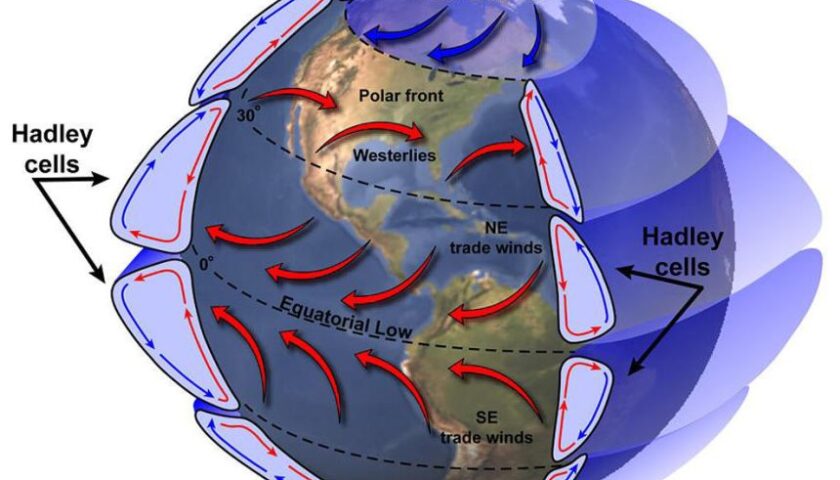What is a Procedural Approach Control?
Procedural approach control is a form of non-radar air traffic control conducted from the Tower to separate arriving, departing, and overflying aircraft within a designated area around an aerodrome. The procedural approach is used in areas with little or no radar coverage, where traffic density is relatively low.
The procedural approach controller may utilize a variety of (non-radar) separation standards to achieve separation between aircraft i.e. vertical, longitudinal, lateral, geographical, or visual separation.
Without an accurate radar picture to aid situational awareness the procedural approach controller uses pilot position reports and relies heavily on visualization to maintain a mental picture of the evolving 3D traffic scenario.
Often there is a need to deliver long and complicated departure/arrival instructions to a pilot in order to enforce separation. For example, a complex diversionary climb instruction or a descent requirement with added terrain considerations. Resultantly, the procedural approach environment is quite susceptible to readback/hear back errors.
Procedural approach separations are generally (but not always) less expeditious than radar separations. Because of this, and the extra time is taken to formulate and execute procedural separations, the capacity of a procedural approach controller (with regards to traffic levels) is less than in a radar approach environment.
As the aircraft approach or leave airports, they must be separated as they climb or descend through the altitude or levels of each other. Since the destination or departure airport may be considered as a single point on the surface towards, or away from which the airplanes are moving, the controller must ensure that a form of separation is applied whether aircraft are both departing, both arriving or passing each other in opposite directions. The most appropriate form of separation in these circumstances is lateral separation and must be effected at some minimum distance from the airport to ensure safety. If this is not possible, the vertical separation must be applied until the incoming aircraft is either visible to the controller or reports over the airport’s electronic navigation beacon. Such a procedure may cause some justifiable delay to arriving aircraft.
What Pilots must understand?
Both aircraft arriving at the same airfield. The preceding aircraft can assist by either increasing or decreasing speeds so as to achieve optimal distance behind the aircraft. The optimal separation for continuous descend should be more than 20 nm (same DME or GNSS distance to same navigation point) or based on subsequent approach criteria. It is important to understand that subsequent aircraft would be cleared for approach only once the preceding aircraft has landed or on the final approach track and the tower has it in visual contact. To avoid getting in to hold build up separation which will cater to the outbound leg, inbound leg, and turn time involved.
Both aircraft departing from the same airfield. The aircraft ahead may be requested to maintain a higher speed and report 15 nm or more at the earliest. The subsequent aircraft should establish on diverging radial at least by 15 degrees (same VOR) so as to establish lateral separation and continue the uninterrupted climb. The key here is at least one aircraft should be more than 15 nm and both aircraft established on track minimum 15 degrees apart (same VOR).
Departing and arriving aircraft to the same airfield. In this scenario initially controlling factor would be a separation of more than 20 nm (same DME or GNSS distance form the same navigation point) and then subsequently it would be track separation of minimum 15 deg and at least one aircraft at more than 15 nm from the facility. The most likely tower will issue vertical separation to keep aircraft safe once they do not meet any of the above criteria.
Thus in the vicinity of the airport, Lateral Separation may be achieved using the required pilot-reported, or controller-calculated distance from the common electronic airport homing beacon plus a required angular difference between the aircraft being separated at the time.
What is Common?
Common for all of them is that the pilots report their position, and then the controller applies separation in accordance with the rules.
How Pilots can assist?
Look out – Listen out and Speak out.
- Listen out – well before entering the area monitor the recommended or mandatory frequency.
- Speak out – on the first contact speak out your position, altitude, ETA, and intentions.
- As a pilot be prepared to provide relevant information in terms of radial, distance, and altitude and help the flow of information. Keep relevant information (on FMS) available at all times.
- Be conspicuous. Keep landing light/strobes/position lights ON. Keep transponder ON. Use TACAS to corroborate traffic position.
- Be prepared to talk. To expedite traffic flow, the controller would require frequent position updates. This could be as frequent as every minute.
- Listen out – so as to form a mental picture of the traffic.
- Adopt ‘sterile cockpit procedure’, complete checks and briefing well in advance, and concentrate on procedure and clearance.
- Look out – for closing in traffic and be safe.
- Based on the traffic picture (situational awareness), the pilot may change track and decrease or increase speed to create lateral separation.
- Thus with a proactive approach as a pilot, you can help reduce the delay and save on time and fuel.
Be safe. Happy landing.



